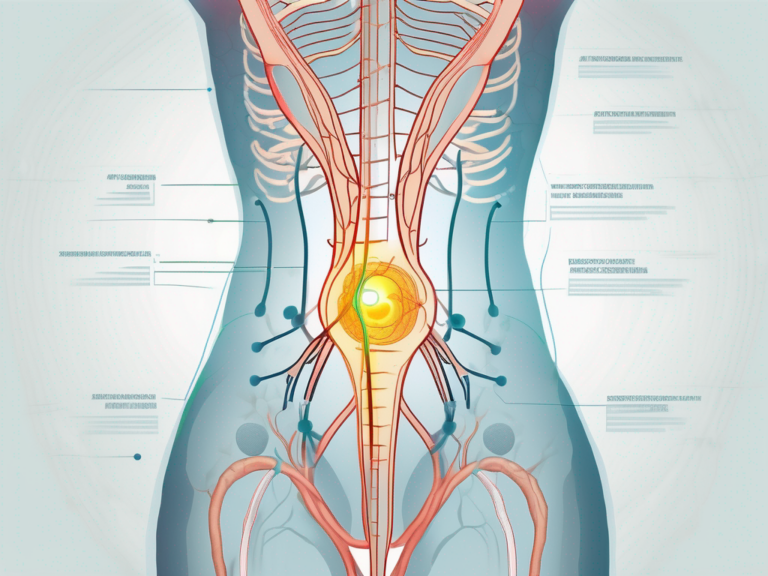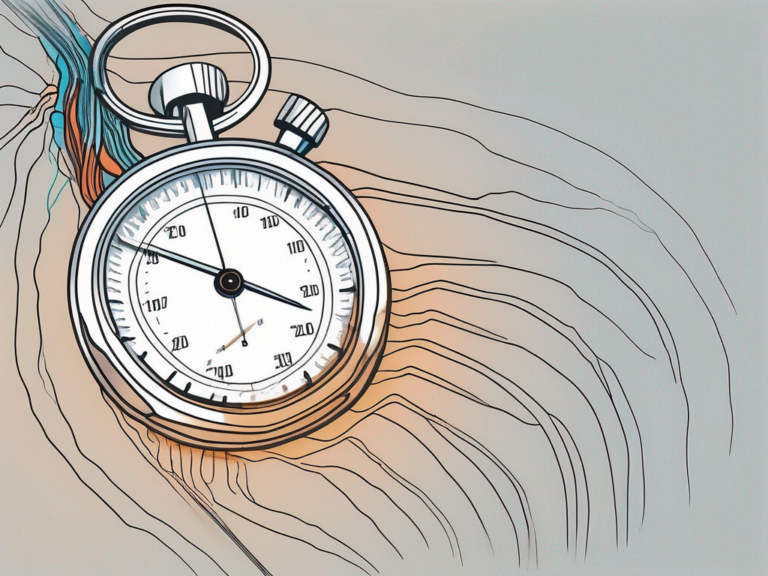What Is an Implantable Sacral Nerve Stimulator Used For?
An implantable sacral nerve stimulator is a device that is used to treat various medical conditions by stimulating the sacral nerve. This innovative technology has been proven to provide relief for individuals suffering from urinary and bowel control issues, chronic pain, and other related conditions. In this article, we will delve into the basics of sacral nerve stimulation, explore the science behind implantable sacral nerve stimulators, discuss the medical conditions that can be treated with this technology, examine the procedure of implanting a sacral nerve stimulator, and evaluate the risks and benefits associated with its use. We will also touch on what to expect after the implantation and provide tips for living with a sacral nerve stimulator. It is important to note that this article does not offer medical advice, and individuals should consult with a healthcare professional to determine if this treatment option is suitable for their specific needs.
Understanding the Basics of Sacral Nerve Stimulation
The Anatomy of the Sacral Nerve
The sacral nerve is a bundle of nerves located at the base of the spine. It plays a vital role in the control of various bodily functions, including bladder and bowel control, as well as sexual function. Stimulation of the sacral nerve can help regulate these functions and address associated issues.
The sacral nerve, also known as the sacral plexus, is formed by the merging of the spinal nerves S2-S4. These nerves originate from the lower part of the spinal cord and extend downwards, branching out to innervate the pelvic organs and lower limbs. The sacral nerve is responsible for transmitting signals between the brain and the muscles involved in bladder and bowel control.
Within the sacral nerve, there are both sensory and motor fibers. Sensory fibers carry information from the bladder, bowel, and surrounding structures to the brain, allowing us to perceive sensations such as fullness, urgency, or pain. On the other hand, motor fibers transmit signals from the brain to the muscles, enabling voluntary control over bladder and bowel movements.
The Role of the Sacral Nerve in the Body
The sacral nerve serves as a pathway that transmits signals between the brain and the muscles involved in bladder and bowel control. When there is a disruption or dysfunction in this pathway, it can lead to urinary or bowel control issues, as well as chronic pain. Sacral nerve stimulation aims to restore normal nerve function and provide relief from these symptoms.
Bladder and bowel control are complex processes that require coordination between the muscles, nerves, and the brain. The sacral nerve acts as a communication channel, allowing the brain to send signals to the muscles responsible for holding or releasing urine and feces. It also relays sensory information from the bladder and bowel back to the brain, providing us with awareness of our bodily functions.
Disorders such as overactive bladder, urinary retention, fecal incontinence, and chronic pelvic pain can arise when there is a disruption in the normal functioning of the sacral nerve. These conditions can significantly impact a person’s quality of life, causing embarrassment, discomfort, and social isolation. Sacral nerve stimulation offers a potential solution by modulating the activity of the sacral nerve and restoring proper communication between the brain and the pelvic muscles.
Sacral nerve stimulation involves the use of a small device, similar to a pacemaker, that is implanted under the skin. This device delivers electrical impulses to the sacral nerve, helping to regulate its activity. By stimulating the sacral nerve, the device can help improve bladder and bowel control, reduce pain, and enhance overall quality of life for individuals suffering from sacral nerve-related conditions.
The Science Behind Implantable Sacral Nerve Stimulators
Implantable sacral nerve stimulators have revolutionized the treatment of various conditions related to sacral nerve dysfunction. These small devices, typically implanted under the skin in the lower back or buttock area, have proven to be highly effective in restoring normal function and alleviating chronic pain.
How Does a Sacral Nerve Stimulator Work?
A sacral nerve stimulator works by sending mild electrical impulses to the sacral nerve. This stimulation helps to modulate the nerve’s activity, ultimately restoring proper bladder and bowel function. By targeting the sacral nerve, the stimulator can effectively address issues such as urinary incontinence, fecal incontinence, and chronic pain.
The electrodes connected to the device are strategically placed near the sacral nerve, ensuring precise and targeted stimulation. The electrical impulses generated by the stimulator mimic the natural signals sent by the brain to control bladder and bowel movements. This technology allows individuals with sacral nerve dysfunction to regain control over their bodily functions and significantly improve their quality of life.
The Technology Involved in Sacral Nerve Stimulators
The technology used in implantable sacral nerve stimulators has undergone remarkable advancements in recent years. These devices now come equipped with features that allow for personalized adjustments, ensuring optimal treatment outcomes for each individual.
One notable advancement is the ability to customize the stimulation settings based on the patient’s specific needs. This personalized approach ensures that the sacral nerve stimulator delivers the right amount of electrical impulses to achieve the desired therapeutic effect. Patients can work closely with their healthcare providers to fine-tune the settings, maximizing the benefits of the device.
Furthermore, modern sacral nerve stimulators have been designed with patient comfort in mind. Manufacturers have made significant strides in reducing the size of the devices, making them less obtrusive and more discreet. This improvement not only enhances patient comfort but also allows for a more seamless integration of the device into their daily lives.
In addition to size reduction, battery life has also been a focus of improvement. The latest sacral nerve stimulators boast extended battery life, minimizing the need for frequent replacements and reducing the overall maintenance required. This enhancement ensures that patients can enjoy uninterrupted therapy without the hassle of frequent device management.
As research in the field of sacral nerve stimulation continues to progress, ongoing efforts are being made to enhance the effectiveness and versatility of these devices. Scientists and engineers are exploring innovative ways to optimize the stimulation patterns, improve energy efficiency, and expand the range of conditions that can be effectively treated with sacral nerve stimulators.
Overall, implantable sacral nerve stimulators represent a remarkable advancement in medical technology. They have transformed the lives of countless individuals suffering from sacral nerve dysfunction, offering them renewed hope, improved functionality, and a better quality of life.
Medical Conditions Treated with Sacral Nerve Stimulators
Treating Urinary and Bowel Control Issues
Sacral nerve stimulation has been proven to be a valuable treatment option for individuals experiencing urinary and bowel control issues. This includes conditions such as urinary incontinence, overactive bladder, fecal incontinence, and constipation. By modulating the sacral nerve activity, these devices can help regulate the muscles involved in these functions, leading to improved control and a better quality of life.
Urinary incontinence is a common condition that affects millions of people worldwide. It can cause embarrassment and social isolation, as individuals may feel self-conscious about their inability to control their bladder. Sacral nerve stimulation offers hope to these individuals, as it can help restore bladder control and reduce the frequency of involuntary urine leakage.
Overactive bladder, on the other hand, is characterized by a sudden and uncontrollable urge to urinate. This can disrupt daily activities and lead to frequent trips to the bathroom. Sacral nerve stimulation can help regulate the nerve signals that control bladder function, reducing the frequency and intensity of these urges.
Fecal incontinence, also known as bowel incontinence, is the inability to control bowel movements, resulting in involuntary leakage of stool. This condition can be particularly distressing and can significantly impact a person’s quality of life. Sacral nerve stimulation can help improve the coordination of the muscles involved in bowel control, reducing the occurrence of fecal incontinence episodes.
Constipation, characterized by infrequent bowel movements and difficulty passing stool, can also be effectively treated with sacral nerve stimulation. By stimulating the sacral nerve, this therapy can enhance the muscle contractions in the intestines, facilitating regular bowel movements and relieving constipation.
Addressing Chronic Pain with Sacral Nerve Stimulation
In addition to treating urinary and bowel control issues, sacral nerve stimulation can also provide relief for individuals suffering from chronic pain in the pelvic region, lower back, or genitals. By targeting the sacral nerve, the electrical impulses generated by the stimulator can help alleviate pain and improve overall comfort. This can significantly improve the daily lives of individuals living with chronic pain.
Chronic pain can have a debilitating impact on a person’s physical and emotional well-being. It can limit mobility, disrupt sleep, and lead to feelings of frustration and despair. Sacral nerve stimulation offers a non-invasive and drug-free alternative for managing chronic pain in the pelvic region, lower back, or genitals.
The electrical impulses delivered by the sacral nerve stimulator work by interfering with the pain signals sent to the brain. This modulation of nerve activity can reduce the intensity of pain sensations and provide much-needed relief. By controlling pain, sacral nerve stimulation can allow individuals to engage in activities they enjoy and improve their overall quality of life.
Furthermore, sacral nerve stimulation has been shown to have long-term benefits for individuals with chronic pain. Unlike medications that may lose their effectiveness over time or have undesirable side effects, sacral nerve stimulation offers a sustainable solution for managing pain. With proper programming and adjustment, the stimulator can be tailored to each individual’s needs, ensuring optimal pain relief.
The Procedure of Implanting a Sacral Nerve Stimulator
Preparing for the Procedure
Prior to the implantation of a sacral nerve stimulator, thorough evaluation and testing will be conducted to ensure that this treatment option is appropriate for the individual. This may include imaging studies, urodynamic testing, and other assessments to determine the underlying cause of the symptoms. It is essential to communicate openly with the healthcare team, provide a comprehensive medical history, and follow any pre-procedural instructions provided.
During the evaluation process, the healthcare team will take the time to explain the procedure in detail, addressing any concerns or questions the patient may have. They will discuss the potential benefits and risks associated with the implantation of a sacral nerve stimulator, ensuring that the patient fully understands the procedure and its potential outcomes.
Furthermore, the healthcare team will conduct a thorough physical examination to assess the patient’s overall health and determine if they are a suitable candidate for the procedure. This examination may include checking vital signs, reviewing medical records, and conducting additional tests if necessary.
Once the evaluation process is complete, the healthcare team will work closely with the patient to develop an individualized treatment plan. This plan will take into account the patient’s specific needs and goals, ensuring that the implantation of a sacral nerve stimulator is the most appropriate course of action.
What to Expect During the Implantation
The implantation of a sacral nerve stimulator is typically performed under general anesthesia. This ensures that the patient remains comfortable and pain-free throughout the procedure. Prior to administering anesthesia, the anesthesiologist will carefully review the patient’s medical history and perform a pre-anesthetic evaluation to ensure their safety.
Once the patient is under anesthesia, the surgeon will make a small incision in the lower back or buttock area. This incision is strategically placed to allow for optimal access to the sacral nerve. The surgeon will then carefully position the device under the skin, ensuring that it is securely in place.
Next, the surgeon will place the electrodes near the sacral nerve. These electrodes are responsible for delivering electrical stimulation to the nerve, helping to alleviate symptoms and improve the patient’s quality of life. The surgeon will carefully position the electrodes to ensure proper placement and optimal stimulation.
The entire procedure usually takes a few hours, depending on the complexity of the case. Throughout the procedure, the healthcare team will closely monitor the patient’s vital signs and ensure their comfort and safety.
After the implantation is complete, the patient will be transferred to a recovery area where they will be closely monitored. The healthcare team will provide post-procedural care instructions, which may include guidelines for wound care, pain management, and activity restrictions. They will also schedule follow-up appointments to monitor the patient’s progress and make any necessary adjustments to the device settings.
It is important for patients to follow all post-procedural care instructions and attend their follow-up appointments to ensure optimal healing and device functionality. The healthcare team will be available to address any concerns or questions that may arise during the recovery process.
Risks and Benefits of Sacral Nerve Stimulation
Potential Complications of Sacral Nerve Stimulation
While sacral nerve stimulation is generally considered safe and effective, as with any medical procedure, there are potential risks involved. These may include infection, bleeding, pain at the implantation site, device malfunction, or nerve damage. It is crucial to discuss these risks with a healthcare professional and thoroughly weigh the potential benefits against the potential complications before pursuing this treatment option.
When it comes to infection, although rare, it is a potential complication that needs to be considered. Infections can occur at the implantation site and may require antibiotic treatment. It is important to follow proper hygiene practices and keep the area clean to minimize the risk of infection.
Bleeding is another potential complication that can occur during or after the sacral nerve stimulation procedure. While the risk is relatively low, it is important to be aware of the possibility and to inform your healthcare professional if you experience excessive bleeding or prolonged bleeding.
Pain at the implantation site is a common concern following sacral nerve stimulation. The level of discomfort can vary from person to person, and it is important to communicate any pain or discomfort to your healthcare professional. They can provide guidance on pain management strategies and ensure your comfort throughout the process.
Device malfunction is a rare but possible complication of sacral nerve stimulation. The implanted device may experience technical issues, such as battery failure or electrode malfunction. Regular follow-up appointments with your healthcare professional can help monitor the device’s function and address any potential problems.
Nerve damage is a potential risk associated with sacral nerve stimulation. While this is rare, it is crucial to be aware of the possibility. Your healthcare professional will carefully evaluate your suitability for the procedure and take precautions to minimize the risk of nerve damage.
The Positive Impact of Sacral Nerve Stimulation on Quality of Life
For individuals suffering from urinary and bowel control issues or chronic pain, sacral nerve stimulation can have a remarkable positive impact on their quality of life. The ability to regain control over bodily functions, alleviate discomfort, and potentially reduce dependence on medication can greatly improve daily activities, social interactions, and overall well-being.
Imagine being able to participate in activities that were once limited or avoided due to urinary or bowel control issues. Sacral nerve stimulation can provide individuals with the freedom to engage in social events, travel, and pursue hobbies without the constant worry of accidents or discomfort.
Chronic pain can significantly impact a person’s quality of life, making even simple tasks challenging. Sacral nerve stimulation offers a potential solution for individuals suffering from chronic pain by targeting the nerves responsible for transmitting pain signals. By reducing or eliminating pain, individuals can experience improved mobility, better sleep, and an overall enhanced sense of well-being.
It is important to have realistic expectations when considering sacral nerve stimulation. While it can provide significant improvements, it may not completely eliminate all symptoms or conditions. Consulting with a healthcare professional who specializes in sacral nerve stimulation can help determine if this treatment option is the right fit for you.
During the consultation, your healthcare professional will evaluate your medical history, conduct a thorough examination, and discuss your goals and expectations. They will provide you with detailed information about the procedure, potential outcomes, and any potential risks involved. This collaborative approach ensures that you are well-informed and can make an educated decision about your treatment options.
Life After Implantation: Adjusting to a Sacral Nerve Stimulator
Maintenance and Care for Your Sacral Nerve Stimulator
Following the implantation of a sacral nerve stimulator, regular care and maintenance are essential to ensure its longevity and optimal performance. This may involve periodic visits to the healthcare provider for device programming adjustments, battery replacements, or troubleshooting any issues that may arise. It is crucial to follow the care instructions provided by the healthcare team and should any concerns or questions arise, consult with a healthcare professional promptly.
Living with a Sacral Nerve Stimulator: Lifestyle Adjustments
Living with a sacral nerve stimulator may require some lifestyle adjustments, although most individuals find that the benefits of this treatment option far outweigh any inconveniences. It is important to inform healthcare providers and medical staff about the presence of the device prior to any medical procedures, including MRI scans or other diagnostic tests. Additionally, certain physical activities, such as contact sports or vigorous exercise, may need to be modified to prevent damage to the device. Open communication with the healthcare team and a willingness to adapt can help individuals successfully integrate a sacral nerve stimulator into their daily lives.
In conclusion, implantable sacral nerve stimulators are valuable medical devices used to treat urinary and bowel control issues, chronic pain, and related conditions. By stimulating the sacral nerve, these devices provide relief and improve the quality of life for individuals affected by these conditions. It is important to seek advice from a healthcare professional to determine if this treatment option is suitable for individual needs. With ongoing advancements in technology and research, sacral nerve stimulation continues to evolve as a promising therapeutic option, offering hope to those in need of effective treatment for their symptoms.





